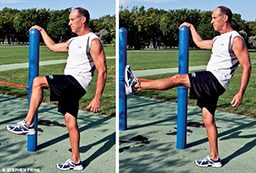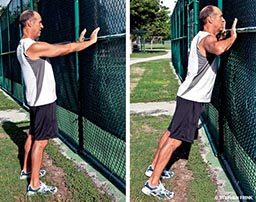Building muscle is a great way to boost your metabolism and ward off fat storage. The higher your metabolism, the more calories you burn throughout the day regardless of activity. You even burn more calories while sleeping. Other health benefits of strength training to increase muscle mass include greater bone density, decreased risk of lower back pain and functional independence in later years.
Having more muscle also allows you to perform physically with greater ease. Carrying gear, exiting the water and finning against current may be accomplished with less effort, possibly improving air consumption during dives. Poor muscle performance due to muscle fatigue or decreased muscle function is a potential cause of distress in diving. So improved muscular strength will improve performance, delay fatigue and increase safety by preserving extra energy for unforeseen circumstances that might arise near the end of a dive. As you increase your muscle mass, you will be able to participate more comfortably in higher intensity physical activities that build more muscles, which in turn burn more calories.
Human bodies evolved to hunt and gather food and so are designed to conserve energy rather than expend it. This is why we store excess calories so readily. Unless we make use of our muscles, our bodies are reluctant to dedicate resources to them; in other words, use them or lose them. Convincing our bodies to develop muscles is actually quite simple since our bodies respond to the physical stresses to which they are exposed. If we repeatedly and progressively provide resistance training or, to put it simply, pick up weights and put them back down, gradually increasing the frequency, intensity and duration, muscles will develop.
It does not matter how much or how little strength you have to start, strength training can benefit anyone. As we age, muscular strength declines slowly until around ages 40-50, at which time the rate of decline drastically increases if the full strength of muscles remain unused.
Build muscle by completing the following sequence of exercises to the best of your ability. Start with a few repetitions and little weight, and increase both as your body allows.
Note: To avoid an increased risk of decompression sickness, DAN® recommends that divers avoid strenuous exercise for 24 hours after making a dive. Always make sure that you have medical clearance to exercise during your annual physical exam or following any changes in your state of health.
Bridge

Muscles targeted: glutes, lumbar muscles and hamstrings
- Lie on your back with your arms by your sides and your feet shoulder width apart.
- Bend your knees at a 90° angle.
- While your feet and shoulders maintain contact with the floor, lift your torso and thighs as high as possible.
- Hold this position, squeezing your glutes as tightly as possible, before returning to the starting position.
- Repeat without resting your torso on the floor.
Modification: Place a rolled towel under the buttocks.
Standing Knee Extensions

Muscles targeted: hip flexors, quadriceps and rectus abdominis
- While standing, flex one hip to bring your thigh parallel to the ground.
- Extend the knee so your entire leg is as close to parallel with the ground as possible. You are not expected to be able to extend it fully, but your leg will get a little higher with each attempt.
- Flex the knee while keeping the thigh parallel to the ground, and extend the leg again without touching your foot to the ground.
- Repeat on the opposite side.
Challenge: Add ankle weights, a cable or a strength band to increase resistance.
Plyometric Pectorals

Muscles targeted: pectoralis major, triceps
- Stand facing a wall; let your body fall toward it.
- Use your arms at the last moment to push off, minimizing contact time with the wall to maintain the plyometric effect.
Tip: This exercise should be done in a controlled manner, make sure you start with your feet close to the wall and gradually move away. Avoid locking your arms at contact.
Challenge: Move farther away from the wall.
Bent-Over Rows

Muscles targeted: rhomboids, deltoids, biceps, latissismus dorsi, teres major
- Bend forward so your torso is almost parallel to the ground.
- Using dumbbells, an elastic band or even water bottles or soup cans for resistance, pull your elbows toward the sky, squeezing your shoulder blades together until your hands are even with your navel. Lower the weights in a slow, controlled manner back to the starting position.
Tip: If you are prone to lower-back pain, your torso should be at a 45° angle to the ground.
Shoulder Push-Ups
Muscles targeted: deltoids, triceps

- Squat down, placing your hands about one foot in front of your feet.
- Extend your hips and knees, straightening your legs as far as possible. You are not expected to be able to extend your legs fully, but each time you do the exercise you will get farther.
- Make sure your weight is transferred from your feet to your hands.
- Flex your elbows, bending your arms away from your body and driving your head toward the ground. Go only as far as you feel comfortable going.
- Extend your elbows (straighten your arms) without locking them.
- Repeat.
Tip: You should feel this movement in your shoulders.
© Alert Diver — Q4 Fall 2011